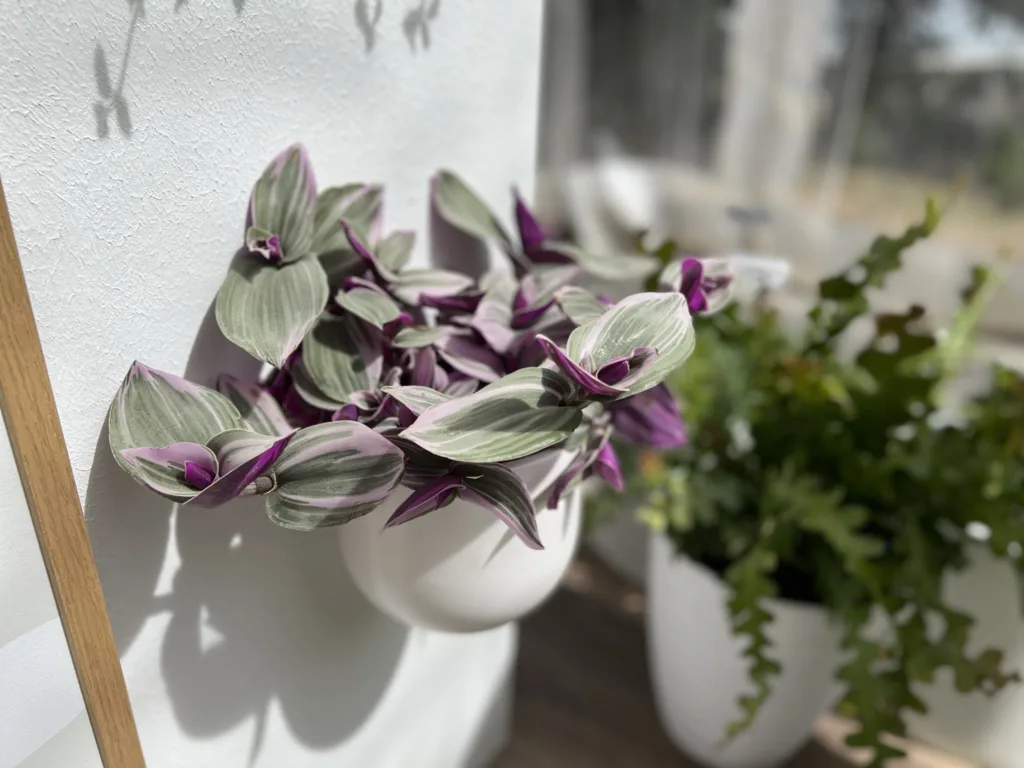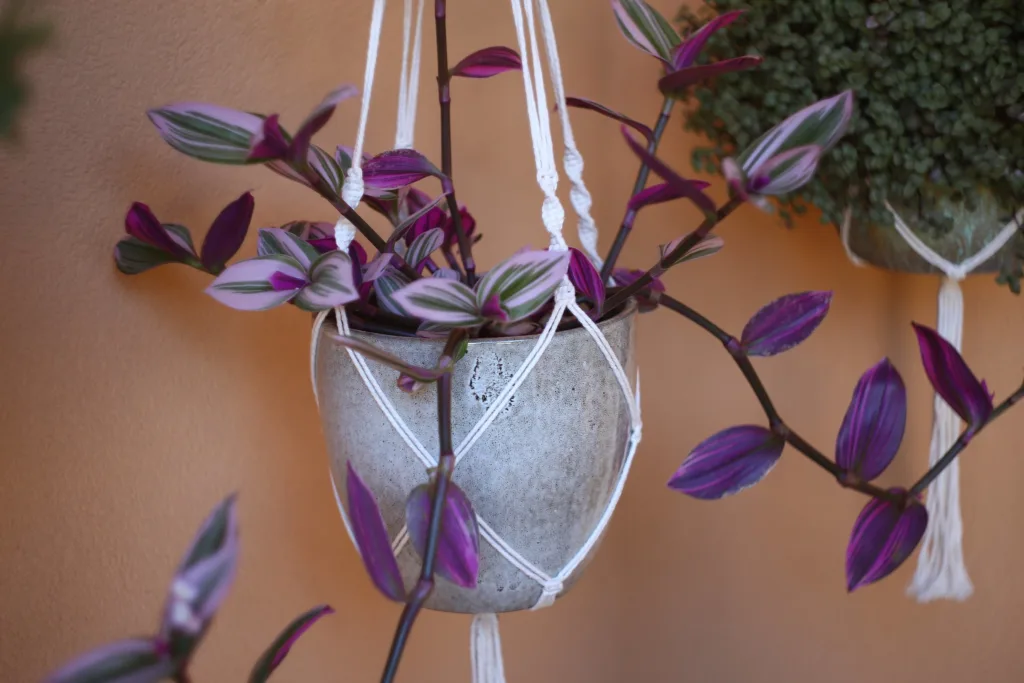If you’re looking for a unique and colorful addition to your indoor plant collection, look no further than the Tradescantia Nanouk.
With its vibrant leaves and easygoing nature, this plant is sure to brighten up any space. Whether you’re a seasoned plant parent or just starting, this comprehensive guide will provide you with everything you need to know about growing and caring for Tradescantia Nanouk.
What is Tradantia Nanouk
Tradescantia Nanouk, scientifically known as Tradescantia Albiflora ‘Nanouk,’ is a popular and colorful plant appreciated for its vibrant leaves.
Have you ever craved a plant that not only adds a pop of color to your home but also requires minimal care?
Tradescantia Nanouk, also known as Fantasy Venice, is the perfect plant for you. Its stunning variegated leaves, ranging from shades of pink and purple to hints of green, make it a true showstopper.
Tradescantia Nanouk is often used in hanging baskets or as a trailing plant in containers, adding a touch of color to indoor spaces.
Sit back and relax as we take you through the journey of growing and nurturing this remarkable plant.
| Attribute | Details |
|---|---|
| Scientific Name | Tradescantia albiflora ‘Nanouk’ |
| Common Names | Nanouk, Tradescantia Nanouk |
| Family | Commelinaceae |
| Genus | Tradescantia |
| Origin | Cultivated hybrid (exact origin may vary) |
| Type | Perennial, trailing/hanging plant |
| Foliage | Lance-shaped, colorful (pink, purple, green) |
| Texture | Fuzzy or hairy leaves |
| Light Requirements | Bright, indirect light; tolerates lower light |
| Watering Needs | Keep soil consistently moist, avoid waterlogging |
| Soil Type | Well-draining potting mix |
| Temperature Range | Average room temperatures, protect from extremes |
| Propagation | Easily propagated from stem cuttings |
| Common Uses | Hanging baskets, decorative containers |
| Common Issues | Watch for overwatering, ensure proper drainage |
| Special Features | Colorful foliage adds vibrancy to indoor spaces |

Getting to Know Tradescantia Nanouk
Before we dive into the details of growing and caring for Tradescantia Nanouk, let’s get to know this amazing plant a little better.
Belonging to the Commelinaceae family, the Tradescantia Nanouk is a relatively new cultivar that has gained immense popularity among plant enthusiasts.
Its unique foliage and low-maintenance requirements have made it a favorite among both beginners and experienced plant parents.
Appearance and Growth Habits
The Tradescantia Nanouk is a compact plant with trailing vines that can reach a length of up to 12 inches. Its leaves, which are lance-shaped and succulent, exhibit a stunning mix of colors that develop more vibrancy under bright light.
The upper side of the leaf has shades of pink, magenta, and purple, while the lower side showcases a contrasting green hue. With the right care, this plant will reward you with lush foliage and occasional delicate blooms.
Light and Temperature
When it comes to lighting, the Tradescantia Nanouk thrives in bright, indirect light. Place it near a north or east-facing window where it can receive moderate sunlight throughout the day.
However, be cautious of intense, direct sunlight as it can scorch the leaves. As for temperature, this plant appreciates average room temperatures ranging from 65°F to 75°F (18°C to 24°C). Avoid exposing it to extreme temperature fluctuations, as it prefers a stable environment.
Watering and Humidity
While the Tradescantia Nanouk is relatively forgiving, proper watering is crucial for its overall health and appearance.
Allow the top inch of the soil to dry out before watering, and ensure that excess water can freely drain from the pot to prevent root rot.
However, don’t let the soil dry out completely, as this can cause stress to the plant. Mist the leaves occasionally to increase humidity and keep them looking fresh and vibrant.
Soil and Fertilizer
To best care for your Tradescantia Nanouk, use a well-draining potting mix that retains moisture without becoming waterlogged.
A mixture of regular potting soil, peat moss, and perlite or sand works well for this plant. Fertilize every two to four weeks during the growing season, using a balanced liquid fertilizer diluted to half-strength. Avoid fertilizing during the winter months when the plant enters a dormancy period.
Propagation
One of the great advantages of the Tradescantia Nanouk is its ease of propagation. You can propagate this plant through stem cuttings, allowing you to expand your collection or share it with fellow plant lovers.
Trim a healthy stem just below a node, remove the lower leaves, and place it in water or directly into moist soil. Keep the cutting warm and humid, and roots will begin to develop within a couple of weeks.
Troubleshooting Common Issues
Despite its resilience, the Tradescantia Nanouk can still face a few challenges along the way. Here are some common issues to watch out for and how to address them:
Leaf Browning and Curling
If you notice the edges of the leaves turning brown or curling, it may be a sign of underwatering. Ensure that you’re providing enough water to keep the soil consistently moist, but not soaking wet. Adjust your watering routine accordingly, and over time, the plant should regain its health.
Leggy Growth
Leggy growth occurs when the plant doesn’t receive enough light. If you notice long, sparse stems with fewer leaves, it’s an indication that your Tradescantia Nanouk needs more light.
Move it to a brighter location or consider providing supplemental artificial light to encourage compact and balanced growth.

Pests
Like many houseplants, the Tradescantia Nanouk can be susceptible to common pests such as spider mites and aphids.
Regularly inspect the plant for signs of infestation, such as webbing or tiny insects. If necessary, treat the infested plant with an organic insecticide or wipe down the leaves with a diluted solution of mild soap and water.
Conclusion
Congratulations! You are now equipped with the knowledge and skills to grow and care for Tradescantia Nanouk.
This vibrant and low-maintenance plant will not only enhance the aesthetic appeal of your home but also bring you joy as you witness its beautiful foliage thrive.
Remember to provide it with the right amount of light, water, and humidity, and don’t forget to propagate and share this wonderful plant with others.
With your love and care, your Tradescantia Nanouk will undoubtedly become a stunning centerpiece in your indoor plant collection. Happy gardening!
FAQs
Is Tradescantia Nanouk poisonous?
Tradescantia Nanouk is considered mildly toxic. It may irritate if ingested, so keep it out of reach of pets and small children.
Is Nanouk plant rare?
While not extremely rare, Tradescantia Nanouk has gained popularity for its vibrant, multicolored foliage. Availability may vary based on location and demand.
Is Tradescantia Nanouk a hanging plant?
Tradescantia Nanouk is often used in hanging baskets due to its trailing growth habit. It can also be grown in containers or as ground cover.

